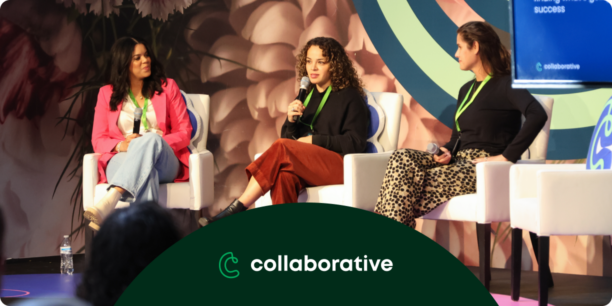Donor Retention Strategies: 3 Steps to Get Donors to Give Again

Nonprofit organizations thrive when connected to an active community of support. The strength of these communities lies in trust, satisfaction, and a shared sense of purpose. But how can nonprofits cultivate these key pillars? The answer lies in effective donor retention strategies.
Donor retention focuses on keeping donors engaged year after year. By implementing effective tactics, you can transform a first-time donor into a loyal advocate who participates in your seasonal campaigns, fundraises on your behalf, and continues to give over time.
Below, we’ll discuss calculating your donor retention rate and why doing so is vital for your organization. We’ll also share actionable donor retention checklists to build a stronger sense of community with your donor base today.
How do you calculate donor retention and what does it mean?
Your donor retention rate measures the percentage of donors from a previous period (usually a year) who made at least one additional gift in the current period. In other words, it measures how many of last year’s donors contributed again this year.
Here’s the donor retention rate formula:
Donor retention rate = (Number of donors who gave last year and this year / Total number of donors from last year) * 100
For example, if you had 100 donors last year and 70 of them donated again this year, your donor retention rate would be 70%.
The Fundraising Effectiveness Project from the Association of Fundraising Professionals found that the nonprofit sector’s average donor retention rate in 2023 was 42%, down 2.5% from the previous year. This downward trend highlights the importance of prioritizing donor retention within your organization to ensure long-term success.
A higher donor retention rate indicates strong donor relationships and effective engagement strategies. Conversely, a low donor retention rate might suggest your nonprofit focuses too heavily on low-impact activities, such as securing one-time gifts from individual donors rather than stewarding new donors into long-term members of your community.
Why is donor retention important for nonprofits?
Donor retention is always vital for nonprofits. But it’s particularly critical following influxes of new supporters, like after year-end campaigns. You want to keep these new donors committed to your cause and ready to journey with you into the new year.
Here are six additional reasons to invest in and optimize donor retention rates.
1. Greater donor lifetime value
Donor lifetime value measures the total impact a supporter will make throughout their entire engagement period with your nonprofit. Retention is the first step in strengthening this metric. When donors feel passionate enough about your cause to return and give again, they establish a layer of loyalty to your organization.
Over time, this connection becomes stronger and stronger. Not only do donors begin to organically give more, but they also look for new ways to participate in your nonprofit. For example, they may:
- Attend an event and invite a friend.
- Introduce you to potential sponsors they know.
- Volunteer their time and skills.
- Donate needed in-kind items.
- Organize a peer-to-peer fundraiser.
Donor relationships sit at the core of your ability to deliver on your mission, making retention efforts crucial to growth. Achieving greater donor lifetime value through donor retention requires constant stewardship to establish lifelong connections.
2. Improved cost-effectiveness
Donor acquisition efforts can be expensive. The costs associated with marketing campaigns, fundraising events, and outreach efforts to attract new donors add up quickly. A more efficient and cost-effective approach lies within your existing donor base.
By focusing on retaining current donors, your organization can achieve more with fewer resources. In fact, securing a new donor can cost nonprofits up to $1.50 per $1.00 raised, compared to $0.20 for each $1.00 raised from an existing donor, making donor retention a good investment for your marketing budget.
3. Predictable revenue stream
Many nonprofits receive the bulk of their income during seasonal donation windows, particularly the year-end giving season. This can make revenue feel tight during less active giving months, even as operational costs remain the same. Cultivating a strong community of recurring donors can help ease cash flow throughout the year.
A stable recurring giving program provides your nonprofit with a more predictable revenue stream. Donors’ monthly giving cadence aids in budgeting, planning, and ensuring that your organization can consistently fund its programs and initiatives. Effective donor retention efforts may even inspire supporters to give on a recurring, automatic basis, making it easy for them while providing more security for your cause.
4. Opportunities for feedback and improvement
Effective donor retention efforts help supporters feel like valuable members of your community. One way to do this is to ask for donors’ feedback and make meaningful changes based on their input. This shows you care about donor experiences and value supporters’ opinions.
Meanwhile, it can also help you gain fresh insights into donor behavior and preferences, informing you how to approach everything from your donation forms to social media messaging and other elements that may affect your attrition rate. Donors who choose to return to your organization again and continue to engage with your cause can offer insights into what you do right and where to make improvements.
5. Cultivation of a positive reputation
Trust and transparency are crucial for nonprofits when building and maintaining a community of support. People want to know that the organization they donate to puts their gifts to good use. This public perception is extremely influential in attracting or deterring support.
Having real people demonstrate their ongoing commitment to your work is incredibly valuable for gaining public trust. Each recurring gift is a vote of confidence in your nonprofit and its work. Repeat donors also provide key social proof to new donors that they can trust you with their first and second gifts—and any future recurring donations.
Overall, a high donor retention rate signals to current and prospective donors, volunteers, and other partners that your nonprofit is trustworthy and effective at making a meaningful impact.
Donor retention checklist: 3 steps to keep supporters engaged
Whether pitching a donor retention plan to your board or kick-starting new engagement efforts with your team, our expert-crafted donor retention plan below offers a great launchpad. By design, it helps you cultivate lasting relationships and turn donors into lifelong supporters.
1. Cultivate connections proactively to prevent donor attrition
The first month after a donor commits to a recurring donation is critical in determining how long they’ll continue supporting your cause. Implementing strategic stewardship tactics immediately following conversion will increase the chances of lasting support.
Re-engage recurring donors consistently throughout their first six months
- Personalize outreach with data from your fundraising platform and customer relationship manager or CRM in the immediate weeks following a recurring donation to acknowledge and celebrate each individual’s generosity.
- Automate a monthly email campaign with updates on what your recurring giving community’s donations have funded in the past four weeks.
- Invite new donors to a donor appreciation event to strengthen relationships and introduce them to fellow supporters.
- Surprise and delight donors with unexpected messages, gifts, or phone calls to express gratitude and check in with them for a more personal touch.
Mitigate new year donor drop-off with inspiring communications
- Send handwritten direct mail or year-end thank-you emails addressing the impact of donors’ continued support.
- Host a special hybrid event through Classy’s fundraising event software, Classy Live, in the new year to celebrate donors’ generosity near and far.
- Incentivize one-time donors to become recurring donors by detailing impact stories that show what their monetary donations will accomplish in the short and long term.
- Share letters or testimonials directly from those impacted by your services to reiterate the value donations have on your community and beneficiaries.
2. Segment your retention strategy by fundraising campaign
Leveraging various campaign types creates multiple on-ramps to giving and keeps donors excited about your fundraising efforts.
Events: Keep post-event momentum rolling with timely ways to get involved
- Re-share photos of attendees, activities, or the venue in the weeks following your event to build on the preexisting excitement, including a clear call to action offering additional ways to show your support for the cause.
- Recognize and thank major donors during and after your event through signage, announcements, and awards, while encouraging others to elevate their giving levels if/when possible.
- Encourage attendees to fundraise on your behalf via a peer-to-peer fundraising platform immediately following your event or for a large upcoming milestone.
Direct giving: Optimize your donation pages to convert returning donor traffic
- Ensure all donors have a streamlined path to become recurring donors with a user-friendly donation website.
- Make it easy to donate regularly with flexible payment options.
- Send personalized donation receipts to each donor to ensure they feel appreciated.
Peer-to-peer: Promote peer-to-peer fundraising as an accessible way to remain engaged
- Invite donors to fundraise on your behalf to remain connected to your cause without a financial commitment.
- Designate a group of employees or volunteers to motivate fundraisers with regular phone calls, emails, or face-to-face interactions.
- Make it simple for fundraisers to share their donation pages on social media by leveraging Classy from GoFundMe’s first-of-its-kind nonprofit Meta integration.
3. Entice new and repeat donors to stay
Get ahead of times when donors are most likely to cancel gifts by consistently optimizing your organization’s giving experience.
Promote easy, affordable recurring giving options
- Give donors the ability to easily update their giving frequencies or pause their recurring subscription if needed.
- Encourage annual donors to split their yearly gifts into smaller, more frequent donations to support your fundraising efforts throughout every season.
- Invite one-time donors to consider how monthly giving might feel more budget-friendly than contributing one lump-sum donation.
Remove barriers to giving with optimized conversion practices
- Present an embedded giving method on your website to immediately greet returning visitors with a quick conversion opportunity.
- Offer ACH (bank transfer) to reduce outdated credit card risks.
- Incorporate mobile-first payments, like PayPal, Venmo, and Apple Pay.
- Track which payments are most popular in your donor database and lean heavily into those methods in future initiatives.
Implement donor retention strategies for greater community and lasting connections
From the moment a supporter makes their first donation, retention-focused donor engagement should begin. By reaching out to donors early and often, you can learn more about them and help them feel more connected to your cause. As their loyalty to your organization grows, they may come to view their involvement as a key piece of their identity.
Analyze donor data regularly to better understand what your community enjoys and where you can improve. Use the checklists above to get started with your donor retention strategies, but personalize them as you go for different supporter cohorts, such as major gifts, volunteers, or event attendees.
Need some inspiration for your next donor retention outreach? Check out our 13 donor retention email templates to jump-start your communications plan.
Copy Editor: Ayanna Julien

Nonprofit reporting made simple



